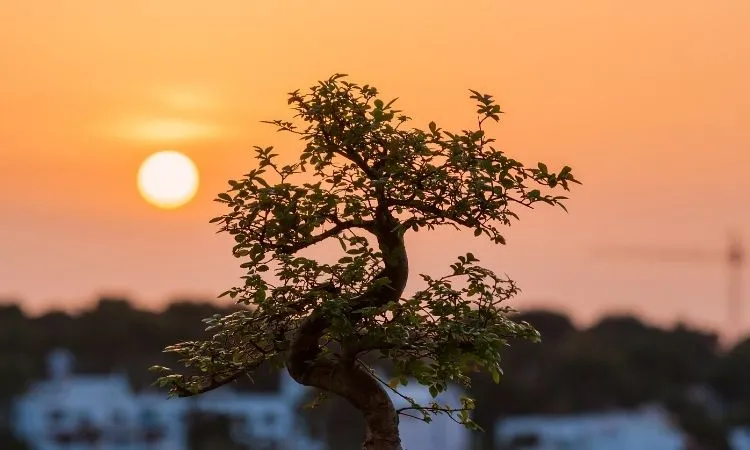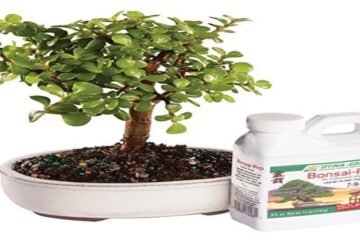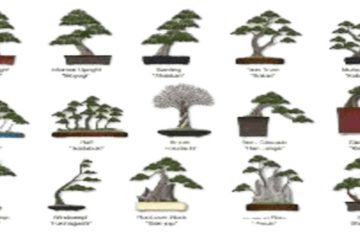Growing bonsai is a challenging task that requires time, patience and dedication. After long efforts, when your beloved bonsai dies suddenly it is unacceptable and shocking. So, you have an inquiry: Why is my bonsai dying?
As a gardener, it is important to know the cause of bonsai dying. This helps you protect your bonsai and keep it healthy. To help you out, we’re going to share 9 possible reasons why your bonsai may die.
After in-depth research and gardening experience, we also list some secret tricks to bring bonsai to life. So, if you don’t want to lose your beloved bonsai, read the article importantly.
Why is my bonsai dying?
Content Overview
First things first, bonsai plants usually don’t die overnight. Bonsai trees can die due to lack of care and maintenance procedures. Discoloration or brittle branches and leaves for no apparent reason is a common red flag to look for if you’re trying to determine if your bonsai tree is dying. The sooner you notice that your plant isn’t growing, the more likely you are to prevent it from completely withering away.
Let us tell you some common bonsai care mistakes that can cause plants to die.
- Forgetting to water it
- Keeping out a bonsai tree indoors
- Water It too Much
- Lack of sunlight or excess sunlight
- Cut branches
- Roots disease
- Lack of care
- Lack of patience
- Pest attacks and plant diseases
- Insects Infections
Here is a brief summary of the reasons why bonsai die. To save your bonsai from dying and bring it back to life, the first step is to identify the cause of your bonsai dying. So now we will discuss the causes in depth along with remedies so that you can easily find out the causes and save your plant.
Read More :The Ultimate Guides How To Revive a Bonsai tree
1.FORGETTING TO WATER IT
One of the most common reasons a bonsai plant dies is not watering it often enough. Bonsai are usually planted in small containers, which means they don’t have large nutrient and water reserves at their disposal. If you forget to water your bonsai before the soil is completely dry, the roots will begin to dry out and eventually die. After a few days, you may notice that the leaves are drying up and falling off.
Until the roots are completely dry, you can help the plant recover nutrients as soon as possible by watering it properly and adding some bonsai fertilizer to the soil.
There is no universal rule on how often a bonsai tree should be watered as it depends on the type of plant and the soil it is planted in. You need to check the soil moisture, don’t water until the soil starts to dry out. a little outside
Most bonsai imported from China are planted in clay-like soil to ensure safe transportation. This soil doesn’t absorb water quickly, so if you water your plant too early, there’s a good chance the water will end up at the bottom of the pot instead of the soil. A good practice when watering your plant is to pour some water then wait a few minutes and add some more water to make sure all the soil is moistened.
2.PUTTING AN OUTSIDE BONSAI TREE INDOORS
As you know bonsai trees can be of different types, such as indoor and outdoor. Suppose you buy a bonsai tree such as a juniper and keep it indoors enough to cause it to die. Because it is an outdoor plant and cannot survive indoors due to lack of sunlight. On the other hand, if your bonsai is an indoor plant and you put it outside, it will also die.
If the leaves of the plant gradually turn yellow and gradually fall, then you have taken care of it properly. Then you have to predict the wrong placement of your plant.
When buying your bonsai, ask the owner about its species. This is the best way to choose the right place. But if you forget to ask, search the web for research. Because it is important to fix the place and organize a proper care routine for sensitive bonsai.
It is best to place indoor bonsai next to south-facing windows. If you buy an outdoor bonsai, make sure it gets proper lighting and protection from strong winds.
3.Water It Too Much
We’ve already mentioned that some soils don’t hold water very well, but the opposite is also true. Some types of bonsai soil retain water in which case over-watering can be a major problem. If your tree is planted in soil that retains water or its pot doesn’t drain properly, the roots will constantly get wet and eventually rot, causing your bonsai tree to die.
Lack of water can kill your bonsai tree within days, while over-watering usually takes weeks to die so you have a high chance of saving it. Inspect the soil and if it seems too moist, you may need to stop watering your plant for a few days and see if the soil dries out.
If it’s still wet, you’ll need to take your bonsai out of the pot, clean the access soil from the roots, and assess the damage. If the root system is not too damaged by rotting, you may be able to save your bonsai by cutting off the damaged roots and replanting your plant in fresh bonsai soil.
4.Lack of sunlight or excess sunlight
Beginner gardeners often make the mistake of thinking that indoor bonsai do not need light. But the truth is that indoor bonsai in your home need plenty of light to grow and survive. On the other hand, outdoor bonsai require direct sunlight and this is also a misconception. Direct sunlight can burn leaves.
If you notice that the leaves of your indoor plant are not growing, do not look green, and even the leaves of the plant are weak, then you should predict that it is deprived of light.
If your outdoor bonsai leaves turn brown or burn and receive direct sunlight that is 90°f+, it becomes fatal.
An indoor bonsai needs 5-6 hours of sunlight a day to grow properly. If you don’t have natural light in your home, you should use artificial grow lights. Or place it next to a south-facing window to get the right light.
If you have an outdoor bonsai, make sure the plants get enough sunlight. In that case, try to place the pot where it gets enough sunlight but not too much heat that burns the leaves.
5.Cutting branches
Cut branches on bonsai trees indicate a lack of nutrients or water problems. Shrinking branches are at a higher risk of dying if you don’t act quickly.
If your tree is affected by various types of tree diseases, you will see cut branches. As a result, the branch will shrink.
There is no specific solution to rescue your plant from this problem. You have to follow some tricks. such as
- You can cut off the shriveled branches from the bonsai to avoid spreading the disease to the whole plant. You can use scissors to cut the affected branches.
- Then test the media to make sure the soil can provide the proper nutrients to the plants.
- Use distilled water when watering plants to avoid salt, toxicity and contamination.
- Repot the bonsai in a well-draining and good quality soil that can provide the proper nutrients to the bonsai plant.
- Keep it in shade after repotting to adjust the changes.
- After repotting, observe the tree carefully to find out if problems have been resolved or if any problems have occurred.
- Give a balanced fertilizer when the bonsai is properly restored.
6.Roots Disease
Healthy bonsai roots are mandatory to ensure healthy bonsai growth. But sometimes, the roots may rot or the plant may be affected by some disease. Your bonsai may die due to unhealthy roots.
The roots should be checked when the plant becomes smaller. If you notice that the roots are not the perfect shape, size, length, discolored or smelly, this can be a sign of root disease.
You need to follow step by step process to identify the root disease and correct it properly.
- Remove the bonsai plants from the pot.
- Place it on a sterile flat surface.
- Now, look at the root to discover any signs like discoloration, smell etc.
- If you find any infected or unhealthy roots, prune the roots.
- Finally, place the plant in another fresh pot.
Be sure to remove affected roots away from the plant to avoid spreading the disease.
7.Lack of Care
Often you try to grow bonsai because of its aesthetic shape and beauty. But after buying, we can feel that growing bonsai requires a lot of effort, dedication and patience. Not all of you can invest those efforts for bonsai plants because of your busy schedules.
If you over-prune, wire the plant incorrectly, don’t provide enough of the right water, fertilizer and monitor its growth, many disasters can happen. All these neglects can kill your bonsai.
With care and dedication you need to replant and prune the tree once a year. Don’t over prune the plants to get the shape quickly. You have to wire the trees with a lot of patience and remove the wire after a certain period of time to avoid damaging your precious trees. So, you can’t lose patience while taking care of your bonsai.
8.Lack of patience
Growing bonsai is an art form so you have to take your time with it. Many beginners try to shape their plants too often, which can stress the bonsai tree.For more details learn how to shape you bonsai tree
Caring for your tree by trimming dead branches to maintain its shape should be done year-round, but no more than once a year unless major changes are absolutely necessary. Pruning or pruning to shape your tree should only be done in the right season. This varies between species but in general, the best time to prune your bonsai is when it is producing new growth.
You can find answers to all frequently asked questions about trimming your bonsai in our check the articles how to trim a bonsai tree.
9.Pests attacks and Diseases
If the above mistakes are not made, the bonsai is more likely to be attacked by harmful insects and diseases. Insects or other diseases can also kill your bonsai.
If you notice fuzzy spots on the leaves, or the leaves become sticky or moldy, this also indicates that your tree is at risk. You know which mold can kill your expensive branches without any symptoms. It can easily grow under branches or leaves, so it is not visible to anyone.
The dangerous part about mold is that it can affect the rest of your plants. So, if you have one plant that develops mold, there is a high risk of affecting other plants. You have to be careful about mold. But if you are already infested with mold, you need to take immediate action.
The recovery process is not the same for all plants. It mainly depends on the species of your bonsai tree. Before taking any action you need to consider the type of bonsai, care and every detail.
You can use alcohol to stop the growth or spread of mold. Apply some alcohol to the affected area through a cotton pad. If it is noticed during pruning, you can cut off the affected leaf or area directly.
Basically, mold grows when humidity is low. So try to increase the humidity in the room where you keep the bonsai.
10.INSECT INFESTATION
It rarely happens, but a mite or spider attack can sometimes cause leaf problems in your bonsai. Fortunately, if you notice spiders, webs or small black dots on your bonsai, these parasites are fairly easy to spot. The best way to get rid of them is to thoroughly shower your plant for a few seconds.
If the problem persists, you should get adaptive bug repellants, which are available at most garden centers. Make sure you read the instructions carefully before applying the treatment and don’t ask a professional for advice.
Summary
Is your bonsai tree dead or seems to be dying? The first thing to do is test the soil and make sure your bonsai is living in the right environment for its species. Sometimes it’s unavoidable to prevent your tree from dying, but if you notice the warning signs early enough, you can try to save it with proper measures and care.




